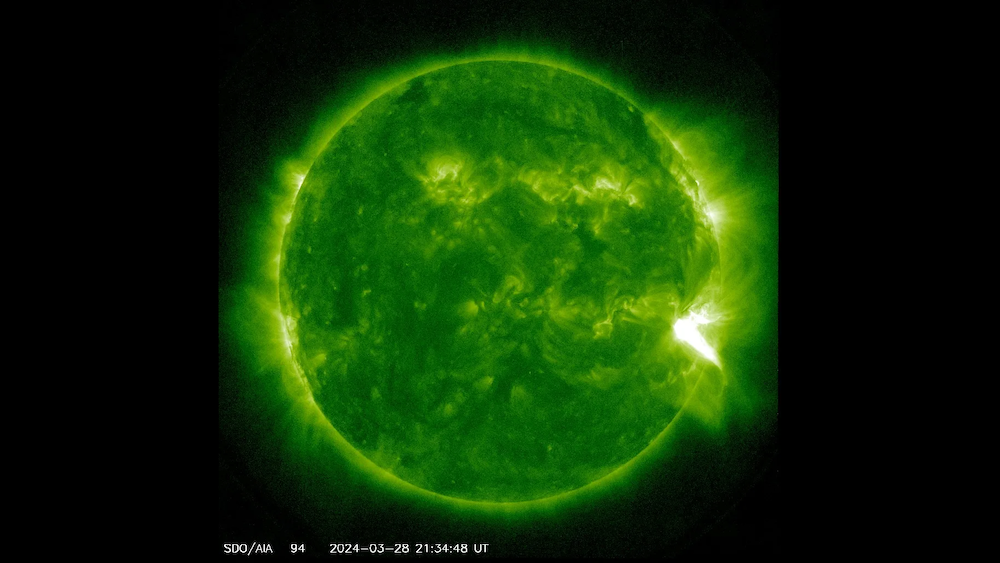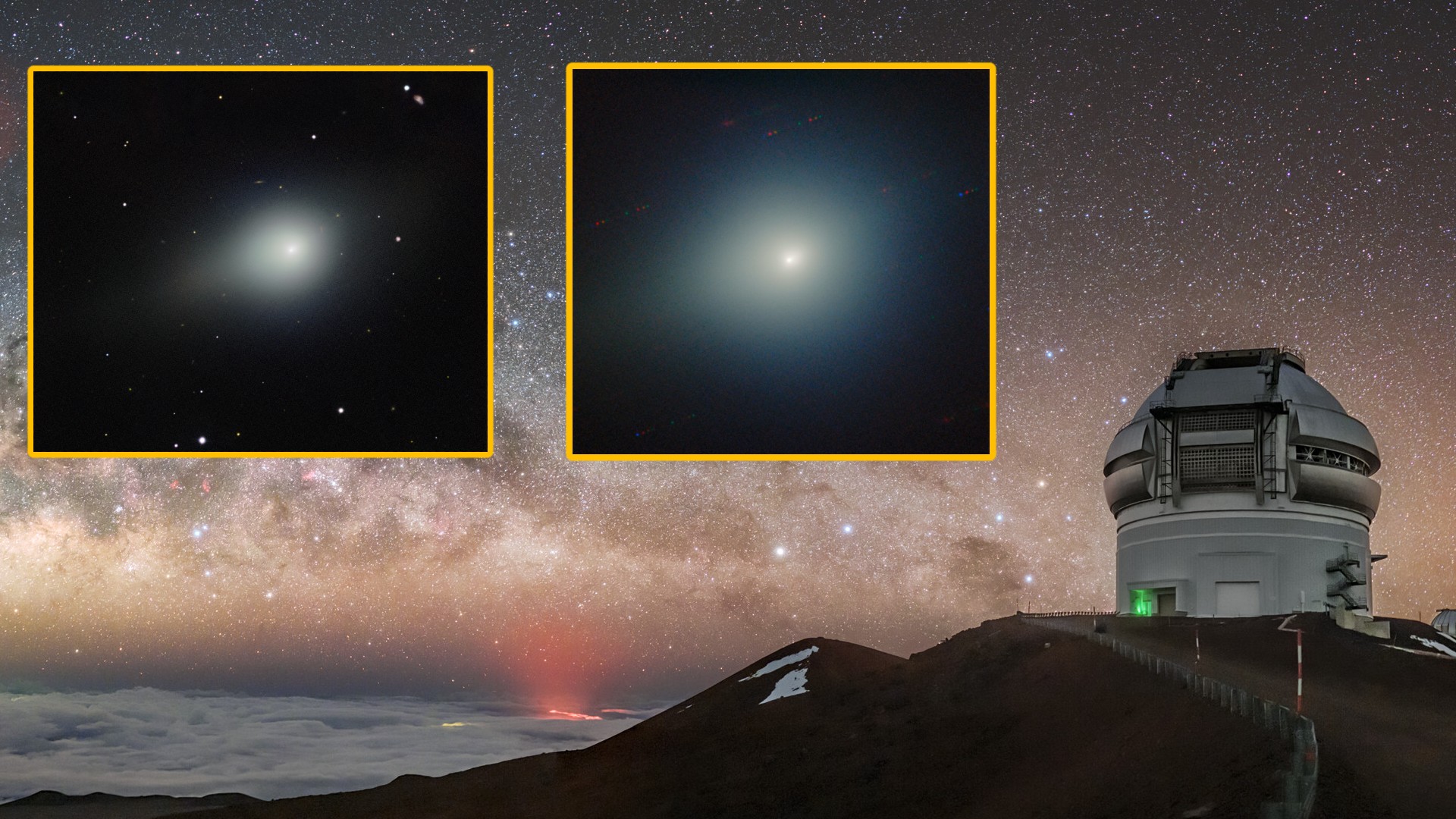Powerful X-class solar flare slams Earth, triggering radio blackout over the Pacific Ocean
On March 28, Earth was hit by an X-class solar flare that was strong enough to ionize part of the planet's atmosphere.

Satellites have detected a massive solar flare powerful enough to ionize part of Earth's atmosphere.
Scientists spotted the flare erupting from the bottom of the sun on Thursday (March 28), using satellites from the National Oceanic and Atmospheric Administration (NOAA), according to the organization's Space Weather Prediction Center.
The flare, which peaked at 4:56 p.m. ET, was categorized as an X1.1 flare. X-class flares are the most powerful type of explosion the sun can produce, according to NASA.
The explosion was so powerful that it ionized the top of Earth's atmosphere, resulting in a "deep shortwave radio blackout over the Pacific Ocean," SpaceWeather.com reported.
The solar outburst was also accompanied by an enormous belch of plasma known as a coronal mass ejection (CME). NOAA scientists were initially concerned that the CME would collide with Earth, potentially resulting in a geomagnetic storm that could impact satellites, radio communications and other infrastructure. However, on Friday (March 29) the agency announced that the outburst would likely miss Earth.
Related: Giant sunspot grew 10 times wider than Earth in just 48 hours, then spat X-class flare right at us
Solar flares are large explosions that occur at the sun's surface when twisted magnetic-field lines suddenly snap, emitting large bursts of electromagnetic radiation, according to Space.com, Live Science's sister site.
Get the world’s most fascinating discoveries delivered straight to your inbox.
This solar event comes on the heels of a "double" X-class flare that occurred Monday (March 25), triggering the most powerful geomagnetic storm on our planet in six years. Not only that, but the unique event was made up of two simultaneous explosions, also known as a sympathetic solar flare.
The abundance of back-to-back solar events has led scientists to think the sun may have entered its explosive era of peak activity, known as solar maximum — which seems to be starting a year earlier than previous forecasts predicted. However, researchers will have to wait until the sun "calms down" to know for sure.
What we do know is that X-class flares are most common during solar maximum, which is part of the sun's 11-year solar cycle. So far in 2024, seven X-class flares, including the latest one, have burst from the sun, which is already half the number that reached Earth in 2023, Live Science previously reported.
Jennifer Nalewicki is former Live Science staff writer and Salt Lake City-based journalist whose work has been featured in The New York Times, Smithsonian Magazine, Scientific American, Popular Mechanics and more. She covers several science topics from planet Earth to paleontology and archaeology to health and culture. Prior to freelancing, Jennifer held an Editor role at Time Inc. Jennifer has a bachelor's degree in Journalism from The University of Texas at Austin.


